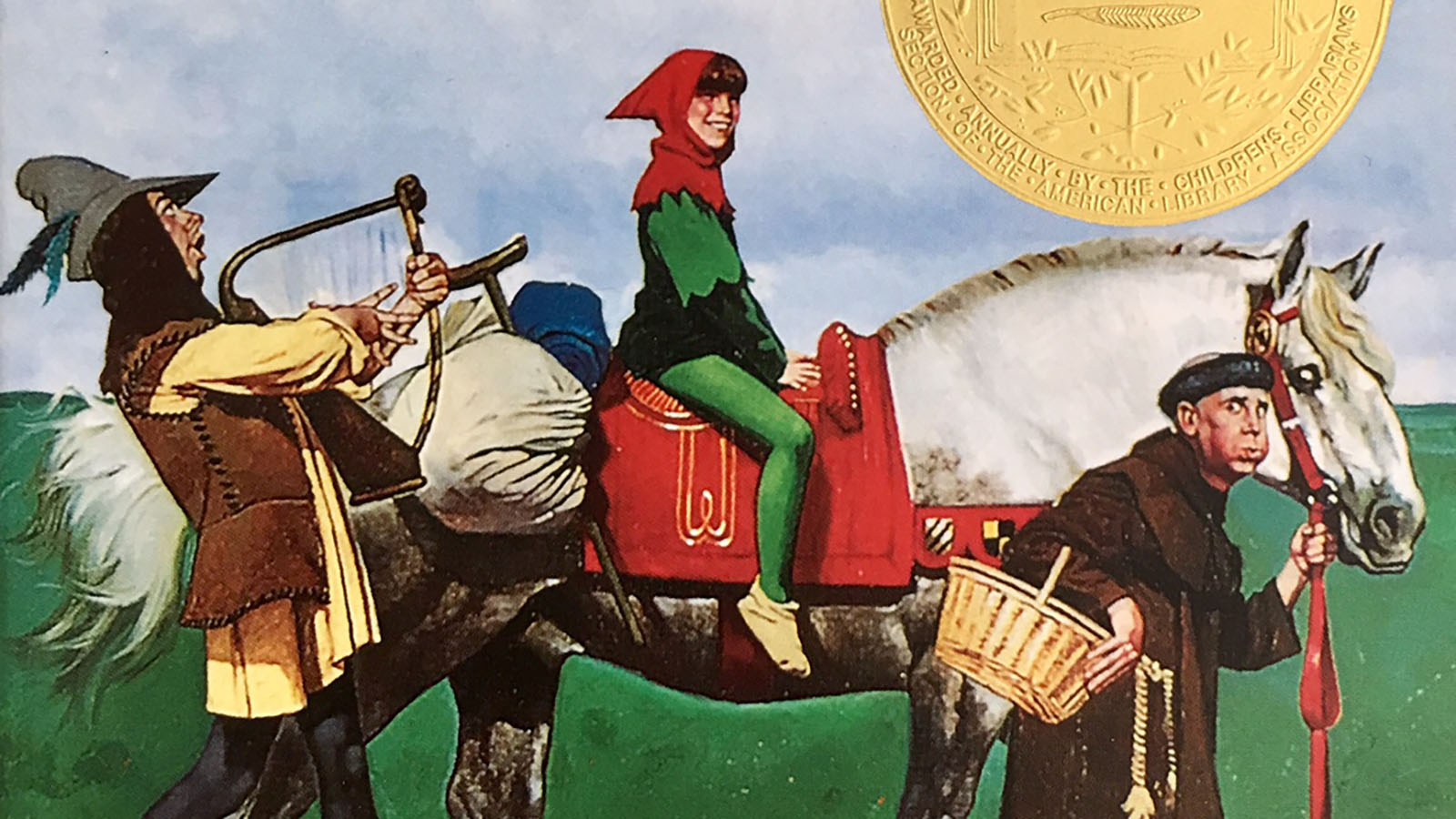As a lifelong reader and now an author and editor of books for young readers, there are few joys as precious to me as discovering a new-to-me children’s book. So naturally, when my second grader came home from school gushing about a book her class was reading, I headed straight for the library.
This lovely book, A Door in the Wall by Marguerite de Angeli, is about a boy named Robin living in medieval London. After an illness, Robin’s legs are paralyzed, and he is taken to a monastery where he is cared for by a monk named Brother Luke until he can be reunited with his parents. Robin is frustrated by his loss of mobility and is grieving his dream of becoming a knight. Brother Luke explains that Robin must find a “door in the wall”—a way to overcome the malaise that overwhelms him. Brother Luke provides him with new skills like whittling, swimming, and using crutches, but it’s not only physically active hobbies that Brother Luke encourages for Robin. He also explains to his young charge that “reading is another door in the wall.”
How can cultivating our minds with stories be a door in the wall? This simple idea struck me because while getting lost in a story is often described as an “escape,” what we usually mean by that escape has a negative connotation: a cowardly retreat from reality. We might imagine ourselves hiding away, ignoring responsibilities, not facing the facts. But that’s not what Brother Luke was trying to communicate to Robin. Instead, the wise monk was acknowledging the power of reading as an escape from what is less real to what is more real. It moves us from the gloomy dungeon of our worldly weariness to the open sky. In our world today, the shadows that seek to overwhelm us are only too obvious. What we need is to be reminded of what Dante calls “the love that moves the sun and the other stars.”
Good stories remind us of the reality of hope and goodness when our hearts are failing to believe.
The stories we offer to our children shape them because human beings are wired to learn through stories. God himself made it so. In the Gospels, Jesus embraces the power of good stories by telling his disciples parables. The story of the prodigal son, for example, follows fictional events and characters to illustrate God’s merciful love. There is nothing more real than the love of God, and a powerful way for us to grasp this love is through stories. By sharing good stories with our children, we can help them understand the grand story of God’s love for us.
When I reflect on childhood stories that shaped me, I think of Anne of Green Gables, in which a neglected young girl discovers her value and worth just as her new caretakers, the elderly siblings Matthew and Marilla Cuthbert, are reminded of the beauty and goodness of the world through her eyes. No matter our age, we are all Annes who must be reminded that we are beloved, and we are all Matthews and Marillas who grow weary and need to be reminded that everything—from the first spring flowers to the shine of the water on the nearby lake—sings the praises of a loving God. While Anne Shirley and the Cuthberts never existed, the story that their author, L.M. Montgomery, weaves is nonetheless true. When I was past childhood, my religious conversion was driven by stories like Brideshead Revisited, which were able to communicate the truth about God’s grace in ways that no lecture ever could.
And yet, the best stories, like Anne of Green Gables and Brideshead Revisited, are not placating drivel or dismissive of pain. Instead, they must wrestle with suffering and darkness. As G.K. Chesterton famously said about fairy tales, “The baby has known the dragon intimately ever since he had an imagination. What the fairy tale provides for him is a St. George to kill the dragon.” Or as Neil Gaiman misquoted the same passage from Chesterton, “Fairy tales are more than true—not because they tell us dragons exist, but because they tell us dragons can be beaten.” The good stories remind us of the reality of hope and goodness when our hearts are failing to believe. They form our imagination so that we can inhabit a deeper reality than our despair and cynicism would allow.
As with a good spiritual retreat, when we retreat from the world with a good story, we are equipped with clearer vision. We stop to ask, “What kind of story am I a part of?” Is it nihilistic or is it characterized by Gospel hope? At the heart of the universe, what is most true: God’s goodness or meaningless chaos? Is the evil that poisons our relationships conquerable? Unless we walk through the door in the wall that leads us to recognize the reality of God’s goodness, we may not be aware that the sorrows of this world are not the whole story or even the half of it.

Word on Fire’s new children’s imprint, Spark, seeks to publish books that serve as doors in the wall leading young readers to beauty, goodness, and truth. The goal is for young readers to know the divine source of these transcendentals intimately.
In addition to books that will communicate important truths of the faith with clarity, we will publish stories that invite the reader into a world full of St. Georges who can conquer the dragons we all face. And by publishing stories of excellent literary quality with stunning illustrations, Spark titles will form the imagination to know and love beauty in order for readers to be drawn to the Creator of beauty.
